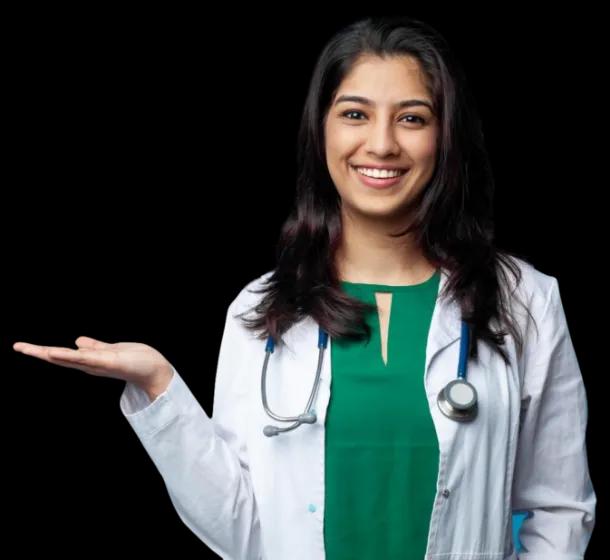When To Seek Treatment: Recognising Varicose Veins Symptoms
In This Article
When To Seek Treatment: Recognising Varicose Veins Symptoms
Alaka
Updated on March 15, 2024
Medically verified by Dr. Arya
Fact checked by Dr. Pournami

Vascular
5 min read
Varicose veins are an issue affecting millions of individuals worldwide. It can result in serious health problems if it is not treated.
Knowing the symptoms and when to seek treatment is thus important to treat varicose veins effectively.
Are you in doubt of having varicose veins? Wondering when to seek treatment? Want to know more about the symptoms?
Worry no more. Mykare Health is here for you!
In this blog, we will help you understand the symptoms of varicose veins and when exactly to seek treatment. Let’s take a look at these.
Varicose Veins: What Are They?
Varicose veins are large and bulged veins. It is usually seen in the legs. Varicose veins are not considered a serious medical condition. However, it can lead to complications in some cases.
Recognizing varicose veins symptoms as early as possible is important. It can help prevent the condition from getting worse. You can seek effective treatment if recognized early.
You can adopt effective management strategies as well to reduce the symptoms.
There are several factors that lead to the development of varicose veins. Some of the causes are:
- Age
- Gender
- Genetics
- Obesity
- Pregnancy
- Lack of physical activities
- Sitting or standing for a long time
- Smoking
- Severe constipation
- Chronic venous insufficiency
- Vein thrombosis
Varicose veins can cause pain, discomfort, swelling, and itching. Severe condition of varicose veins can even cause venous ulcer or blood clots. So, it is crucial to recognize the symptoms as early as possible and get it treated.
Recognizing The Symptoms Of Varicose Veins
Let’s take a look at the common symptoms of varicose veins. Looking out for these symptoms and recognizing them is important.
-
Enlarged veins: The veins in legs may appear bulged and twisted. They are often in blue or purple color. It may appear like a spider web shape, hence the name ‘spider veins’. These veins can be seen just below the surface of the skin on legs.
-
Pain and discomfort: If you have varicose veins, you may feel heaviness or severe pain in the legs. The pain will increase after sitting or standing for so long. Leg muscles may feel tired and heavy.
-
Color change of skin: Varicose veins can cause color change in skin, on the affected areas. The veins may be of red or brown color. This happens when varicose veins are left untreated.
-
Itching: If you have varicose veins, you may experience itching or a burning sensation in the legs. It occurs in the affected areas, around the veins.
-
Leg cramps: The cramps on legs tend to increase especially during night time. This is also a sign of having varicose veins.
 6 min read
6 min readUnderstanding the Stages of Varicose Veins: Symptoms and Progression
 5 min read
5 min readBeneficial Exercises For Varicose Veins: Tips And Routines
 5 min read
5 min readVaricose Veins Medicine: Benefits and Potential Side Effects
Book Your Consultation Now
When To Seek Treatment?
It is crucial to know when to seek treatment for varicose veins. It is as important as recognising the symptoms. Seeking treatment also depends on the complications and the severity of the symptoms.
If you have some mild symptoms such as slight pain or discomfort which are not recurring, you can consider some self care measures, natural remedies, and lifestyle changes.
If the symptoms impact your daily life, it is advisable to seek expert opinion by consulting a healthcare professional.
If you have moderate or severe symptoms just like the ones we have discussed in the previous section, you have to consult a doctor immediately. Doctors will suggest proper treatment methods according to your condition and severity. They will provide personalized advice to handle your varicose veins.
Also, there are some signs of complications you need to be aware of. In severe cases, one may experience bleeding from varicose veins or develop skin ulcers.
If you experience any of these symptoms, seek medical help immediately. It can lead to other complications so you have to act fast. Doctors will recommend appropriate treatment for preventing further complications.
Early detection of varicose veins is thus crucial when it comes to seeking treatment. If you have mild symptoms and have any further concerns about the condition, you can also consider visiting the doctor. Taking necessary preventive measures is also advisable.
What Are The Treatments?
Curious to know about the various ways of treating varicose veins? Here you go:
-
Your doctor will conduct a test called duplex ultrasound to diagnose your condition. Appropriate treatment will be recommended and done after that.
-
There are certain medical options available for treating varicose veins. It includes sclerotherapy, laser therapy, vein ligation and stripping, and ambulatory phlebectomy.
-
These surgeries or other methods may be suggested only when self care measures and other non-surgical treatments are not working for you.
-
Self care treatment options include exercises such as walking, jogging, or running. It also includes managing weight, diet, and avoiding possible causes such as sitting or standing for a longer period.
-
Compression stockings are another measure used to treat varicose veins. Wearing compression stockings gives pressure and will help the leg muscles and veins move blood. Your doctor may prescribe compression stockings or you can get it from any medical stores.
-
The treatment methods can vary according to individuals. It depends on individual conditions and its severity. Individual preferences and health conditions can also be factors.
Varicose veins are large and bulged veins in the legs. Varicose veins are not considered a serious medical condition. But, it can lead to complications in some cases.
Recognising varicose veins symptoms as early as possible is important. It can help prevent the condition from getting worse.
Common causes of varicose veins include age, gender, genetics, obesity, pregnancy, lack of physical activities, sitting or standing for a long time, smoking, severe constipation, chronic venous insufficiency, and vein thrombosis.
Common symptoms include enlarged veins, pain and discomfort, skin color change, itching, and leg cramps. If you experience these symptoms, seek treatment.
If there are mild symptoms such as slight pain or discomfort which are not recurring, you can consider some self care measures, natural remedies, and lifestyle changes. If the symptoms impact your daily life, it is advisable to seek expert opinion.
If there are moderate or severe symptoms, you have to consult a doctor immediately. Doctors will suggest proper treatment methods according to your condition and severity.
Treatment options for varicose veins include self care measures such as exercises and compression stockings. Sclerotherapy, laser therapy, vein ligation and stripping, and ambulatory phlebectomy are the surgical treatments.



